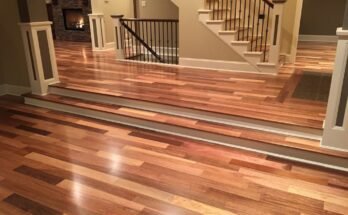Introduction
Renovating your kitchen is an exciting project, and as you prepare to revamp your space, addressing the flooring is essential. Floor sanding in kitchens can breathe new life into tired, worn-out floors, transforming them into stunning focal points. However, proper preparation is key to achieving optimal results and ensuring a seamless process. In this guide, we’ll explore the essential steps to prepare for floor sanding in kitchens, equipping you with the knowledge and tools needed for a successful renovation. From clearing the space to protecting cabinets and appliances, let’s dive into the world of kitchen floor sanding preparation.
Clearing the Space
Before your floor sanding project begins, it’s crucial to clear the space and remove any obstacles that may impede the kitchen floor sanding Melboune process. Here’s how to prepare your kitchen for floor sanding:
- Remove Furniture and Appliances: Clear the kitchen of all furniture, including tables, chairs, and stools, as well as appliances such as refrigerators, stoves, and dishwashers.
- Empty Cabinets and Drawers: Remove items from cabinets and drawers to prevent dust and debris from settling inside during the sanding process.
- Cover Countertops: Protect countertops with plastic sheeting or drop cloths to prevent damage from dust and debris.
Protecting Cabinets and Appliances
While floor sanding can breathe new life into your floors, it’s essential to take precautions to protect cabinets and appliances from damage. Here’s how to safeguard your kitchen fixtures during the sanding process:
- Cover Cabinets: Use plastic sheeting or masking tape to cover cabinets and drawers, ensuring they are fully protected from dust and debris.
- Wrap Appliances: Wrap appliances in plastic sheeting or moving blankets to shield them from dust and damage.
- Seal Doorways: Seal doorways with plastic sheeting or drop cloths to prevent dust from spreading to other areas of your home.
Inspecting the Flooring
Before beginning the floor sanding process, it’s essential to inspect the flooring for any signs of damage or structural issues. Here’s what to look for:
- Cracks and Gaps: Check for cracks, gaps, or uneven surfaces in the flooring that may need to be repaired before sanding.
- Water Damage: Look for signs of water damage, such as warping or discoloration, which may indicate underlying issues that need to be addressed.
- Loose Boards: Identify any loose or damaged floorboards that may need to be secured or replaced before sanding.
Choosing the Right Sanding Equipment
Selecting the appropriate sanding equipment is crucial to achieving professional results in your kitchen floor sanding project. Here’s what you’ll need:
- Floor Sander: Choose a floor sander appropriate for the size and condition of your kitchen floors, such as a drum sander or orbital sander.
- Sanding Discs: Select sanding discs in varying grits to accommodate different stages of the sanding process, from coarse to fine.
- Edging Sander: Invest in an edging sander to sand hard-to-reach areas along the edges and corners of your kitchen floor.
Preparing for Dust Control
Dust control is a crucial aspect of floor sanding in kitchens, as it helps minimize mess and ensure a clean and safe working environment. Here are some tips for controlling dust during the sanding process:
- Use a Dust Containment System: Invest in a dust containment system or vacuum attachment for your floor sander to capture dust and debris at the source.
- Seal Off Adjacent Rooms: Close doors and seal off adjacent rooms with plastic sheeting to prevent dust from spreading throughout your home.
- Wear Protective Gear: Wear a dust mask, safety goggles, and gloves to protect yourself from inhaling dust and debris during sanding.
Inspecting and Repairing Subflooring
Before sanding your kitchen floors, it’s essential to inspect the subflooring for any issues that may affect the sanding process or the overall integrity of your floors. Here’s what to look for:
- Uneven Surfaces: Check for uneven surfaces or subflooring that may need to be leveled or repaired before sanding.
- Water Damage: Look for signs of water damage, such as mold or mildew, which may indicate underlying issues that need to be addressed.
- Structural Integrity: Ensure that the subflooring is structurally sound and free from rot or decay that could compromise the stability of your floors.
Applying Finishing Touches
Once the sanding process is complete, it’s time to apply finishing touches to your newly sanded kitchen floors. Here’s how to ensure a flawless finish:
- Clean Thoroughly: Use a vacuum or tack cloth to remove dust and debris from the surface of your floors before applying any finish.
- Choose the Right Finish: Select a finish that suits your kitchen’s aesthetic and functional needs, such as oil-based polyurethane for a durable, water-resistant surface.
- Apply Finish Evenly: Use a brush or roller to apply the finish evenly across the surface of your floors, following the manufacturer’s instructions



